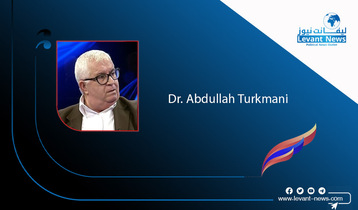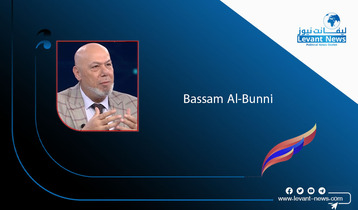-
Is Nothing Sacred to the Houthis? Militarizing and Destruction of Mosques

During this iteration of the civil war in its eighth year the Houthis are close to reaching Tehran’s objectives in Yemen, another state beholden to the Islamic Republic of Iran. As they rampaged through the country the Houthis have employed terrorism in all its forms, however the Western press has focused on terrorist attacks committed against Saudi Arabia, the United Arab Emirates and international shipping. Omitted from news reporting are the staggering number of war crimes and crimes against humanity perpetrated by the Houthis against the people of Yemen, torture, arbitrary arrests, targeted assassinations, human shields… The Houthis official name, Ansar Allah or “Champions of God” is misleading because their actions violate some of the most sacrosanct precepts in Islam. This is another one of the unreported stories in Yemen, the deliberate destruction of Muslim, Christian and Jewish places of worship,. What the Houthis have done should come as no surprise because multiple aspects of their approach have been employed by terrorists in Iraq, Afghanistan, Syria and militias trained by the Islamic Republic of Iran. The title of this article should probably be why are the Houthis demolishing and/or militarizing mosques, desecrating cemeteries, destroying shrines and burning ancient religious manuscripts if they are truly “Champions of God?”
To understand the situation on the ground it is important to quickly examine Yemen’s demographics, a country of close to 30 million where 65-70% of the population adhere to one of the four branches of Sunni Islam. The other 30-35% of the Muslim majority nation are Zaidi which the Houthis draw the vast majority of their political/military movement, in theological terms a Shia sect of Islam not far removed from Sunni Islam. However, the Zaidis and Houthi movement have been wooed by the Islamic Republic since the 1990s and any doctrinal differences are now moot, they have adopted the virulent political Islam espoused by Ayatollah Khomeini. Finally, there is collection of religions, Judaism, Christianity, Bahaism, Hinduism, representing less than 1% of the population but that number is quickly diminishing as Houthis drive them out Yemen.
Before addressing why the Houthis devised a strategy targeting houses of worship and what the tactics look like it is critical to examine some dates and baseline numbers. In the cities Saana, Taiz, Aden a total of nine mosques and one church were designated for destruction, Houthi demolition teams laid the explosive charges and the places of worship were obliterated along with their historic value. The 2020 U.S. State Department report issued every year on religious freedoms around the world paints a better picture of the Houthis assault on mosques in Yemen. These numbers are specific to attacks and developments after the signing of the Stockholm Agreement in 2018, which was supposed to relieve the humanitarian disaster at the port of Hudaydah. From 2018 until 2020, post-Stockholm, the Houthis damaged or destroyed over 49 mosques in Hudaydah whilst militarizing over 100 mosques around the country.
The Embassy of the Republic of Yemen released a press statement on January 21st, 2021, after the Houthis struck a Mosque during morning prayers in Marib, hoping to create the highest death toll possible which turned out to be 111-worshippers and over 100-injured. In the government’s statement it also included some statistics that are more comprehensive than the American State Department’s because it factors in Houthi attacks since 2014. According to the Yemeni Embassy in Washington, D.C. “they [Houthis] have committed 738 violations against places of worship and worshipers, causing the full or partial destruction of 73 mosques. These violations include the bombing, shelling, and looting of mosques, as well as detention of imams and the conversion of mosques into military barracks.” It’s been established the Houthis are systematically targeting mosques, but what are their tactics and how does the defilement of Mosques fit into the Houthi strategy for controlling the country?
Houthi attacks on mosques and worshippers have taken on all forms but the most common are ballistic missile strikes or multiple rounds of artillery shells exploding as they hit the places of worship. With ballistic missiles the Houthis will launch several on a given mosque when they know it will be packed with worshippers. In several instances, such as the January 2021 attack in Marib killing over 100, the Houthis chose the time and mosque because soldiers defending the last holdout in the country were performing morning prayers. A second ballistic missile attack on the same mosque in August 2021 killed 7 and injured 120, only this time among the dead and wounded were only local forces that oversaw security in the city, not the Yemeni military. In either case both are clear violations of the Geneva Convention, something the Houthis serially disregard and then use the same conventions governing warfare to shield themselves while attacking. This leads into understanding why the Houthis deliberately shell mosques so they can no longer function as a house of worship.
When the Houthis slam their artillery shells into a mosque without the intent of pure destruction it is a strategic maneuver that contravenes the Geneva Conventions on several levels. Leaving the mosque intact with enough damage so it’s inoperable as a place of worship the Houthis make it a military barracks with command-and-control centers. Additionally, the Houthis will store large amounts of weapons caches inside the mosque, using its sacred status to protect their tools of terror. Lastly, the minarets are always left standing, the high vantage point and cover presents the perfect “hide-spot” for Houthi snipers to surveil and kill soldiers and civilians wandering the streets. The American military encountered a similar experience when fighting an Iranian proxy during The Battle of Najaf, the Mahdi Army used the minarets as sniper positions and shuttled weapons and men in and out of the mosque. Al-Qaeda in Iraq (AQI) used the mosques in Fallujah the same way during “Operation Phantom Fury”, the Marines and Army took some of their heaviest fire from minarets and ground inside mosque compounds. The Houthis are terrorists that don’t abide by the rules of warfare and the protected status of religious sites, on paper the “Champions of God” do not seem too pious.
Militarization of mosques is one of the overt tactics helping the Houthis achieve their goals, the covert and possibly greater goal is controlling the pulpit and narrative. As previously mentioned, Yemen is a Sunni majority country and the mosques reflect this demographic, there are more Sunni than Shia mosques. In addition, the largest number of Shia mosques are concentrated in the Northwest of Yemen where the Zaidi have called home for generations, the rest of the country has had Sunni imams preaching their version of Islam.
Yemen has quickly fallen into the hands of the Houthis thanks to the military support and guidance provided by Iran and Hezbollah, but they also understand the importance of winning the messaging game or controlling the narrative. Preventing the flow of reporting out of Yemen and/or misinformation fed to the press is part of this effort, turn the country into a media and intelligence “black-hole.” In an impoverished war-ravaged country with little access to the outside world and a domestic press under threat of torture or death the mosque becomes an even more important medium to disseminate information. The ability to control every mosque in a country where the Zaidi Shia sect is in the minority posed a problem for the Houthis, a mosque not controlled by Ansar Allah runs the risk of an imam denouncing Houthi atrocities. For a solution the Houthis have simply destroyed mosques so people can no longer congregate or removed imams from the mosque and replaced the cleric with Houthi propagandists.
The case of Al-Firdaws Mosque in Sanaa illustrates some of the extreme measures Houthis will employ. Considered to be one of the largest mosques in the capital of Yemen the Houthis periodically assaulted it with small arms fire until they took decisive action in January 2021, bulldozing a protective barrier surrounding the religious site. In the space where the barriers once stood the Houthis quickly erected commercial shopping stores which they rented out exclusively to Houthis and seized all private property around the mosque. Shortly thereafter they took the mosque itself. The Houthis have effectively launched a campaign to mitigate the chance of mosques becoming potential breeding grounds for dissent against their tyrannical rule.
The answer to the title of this article is unequivocally no, the Houthis don’t hold anything sacred except the words of their leader Abdul-Malik Al-Houthi or his paymaster in Tehran Ayatollah Ali Khamenei. Western audiences have witnessed and somewhat understand the destruction of religious shrines by terrorist organizations claiming they are doing it according to God’s will, the Taliban and Islamic State are prime examples. What they don’t comprehend is why Muslims will blow up mosques, often the analysis is lazily blamed on sectarian divisions but as we’ve seen it is never that simple. The Houthis have repeatedly defied the Geneva Conventions by targeting mosques to create a death count and militarizing them to consolidate their control of the country. This is not destruction in the name of a sectarian divide, it is purely tactical so the Houthis can win the messaging game and the civil war.

BY: Adrian Calamel
You May Also Like
Popular Posts
Caricature
BENEFIT AGM approves 10%...
- March 27, 2025
BENEFIT, the Kingdom’s innovator and leading company in Fintech and electronic financial transactions service, held its Annual General Meeting (AGM) at the company’s headquarters in the Seef District.
During the meeting, shareholders approved all items listed on the agenda, including the ratification of the minutes of the previous AGM held on 26 March 2024. The session reviewed and approved the Board’s Annual Report on the company’s activities and financial performance for the fiscal year ended 31 December 2024, and the shareholders expressed their satisfaction with the company’s operational and financial results during the reporting period.
The meeting also reviewed the Independent External Auditor’s Report on the company’s consolidated financial statements for the year ended 31 December 2024. Subsequently, the shareholders approved the audited financial statements for the fiscal year. Based on the Board’s recommendation, the shareholders approved the distribution of a cash dividend equivalent to 10% of the paid-up share capital.
Furthermore, the shareholders endorsed the allocation of a total amount of BD 172,500 as remuneration to the members of the Board for the year ended 31 December 2024, subject to prior clearance by related authorities.
The extension of the current composition of the Board was approved, which includes ten members and one CBB observer, for a further six-month term, expiring in September 2025, pending no objection from the CBB.
The meeting reviewed and approved the Corporate Governance Report for 2024, which affirmed the company’s full compliance with the corporate governance directives issued by the CBB and other applicable regulatory frameworks. The AGM absolved the Board Members of liability for any of their actions during the year ending on 31st December 2024, in accordance with the Commercial Companies Law.
In alignment with regulatory requirements, the session approved the reappointment of Ernst & Young (EY) as the company’s External Auditors for the fiscal year 2025, covering both the parent company and its subsidiaries—Sinnad and Bahrain FinTech Bay. The Board was authorised to determine the external auditors’ professional fees, subject to approval from the CBB, and the meeting concluded with a discussion of any additional issues as per Article (207) of the Commercial Companies Law.
Speaking on the company’s performance, Mr. Mohamed Al Bastaki, Chairman BENEFIT , stated: “In terms of the financial results for 2024, I am pleased to say that the year gone by has also been proved to be a success in delivering tangible results. Growth rate for 2024 was 19 per cent. Revenue for the year was BD 17 M (US$ 45.3 Million) and net profit was 2 Million ($ 5.3 Million).
Mr. Al Bastaki also announced that the Board had formally adopted a new three-year strategic roadmap to commence in 2025. The strategy encompasses a phased international expansion, optimisation of internal operations, enhanced revenue diversification, long-term sustainability initiatives, and the advancement of innovation and digital transformation initiatives across all service lines.
“I extend my sincere appreciation to the CBB for its continued support of BENEFIT and its pivotal role in fostering a stable and progressive regulatory environment for the Kingdom’s banking and financial sector—an environment that has significantly reinforced Bahrain’s standing as a leading financial hub in the region,” said Mr. Al Bastaki. “I would also like to thank our partner banks and valued customers for their trust, and our shareholders for their ongoing encouragement. The achievements of 2024 set a strong precedent, and I am confident they will serve as a foundation for yet another successful and impactful year ahead.”
Chief Executive of BENEFIT; Mr. Abdulwahed AlJanahi commented, “The year 2024 represented another pivotal chapter in BENEFIT ’s evolution. We achieved substantial progress in advancing our digital strategy across multiple sectors, while reinforcing our long-term commitment to the development of Bahrain’s financial services and payments landscape. Throughout the year, we remained firmly aligned with our objective of delivering measurable value to our shareholders, strategic partners, and customers. At the same time, we continued to play an active role in enabling Bahrain’s digital economy by introducing innovative solutions and service enhancements that directly address market needs and future opportunities.”
Mr. AlJanahi affirmed that BENEFIT has successfully developed a robust and well-integrated payment network that connects individuals and businesses across Bahrain, accelerating the adoption of emerging technologies in the banking and financial services sector and reinforcing Bahrain’s position as a growing fintech hub, and added, “Our achievements of the past year reflect a long-term vision to establish a resilient electronic payment infrastructure that supports the Kingdom’s digital economy. Key developments in 2024 included the implementation of central authentication for open banking via BENEFIT Pay”
Mr. AlJanahi concluded by thanking the Board for its strategic direction, the company’s staff for their continued dedication, and the Central Bank of Bahrain, member banks, and shareholders for their valuable partnership and confidence in the company’s long-term vision.
opinion
Report
ads
Newsletter
Subscribe to our mailing list to get the new updates!




















